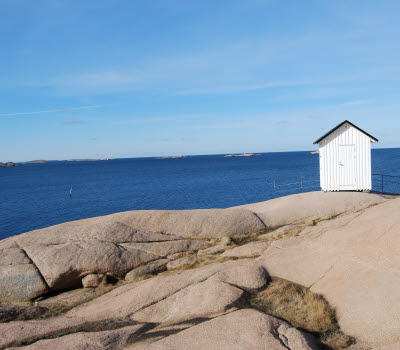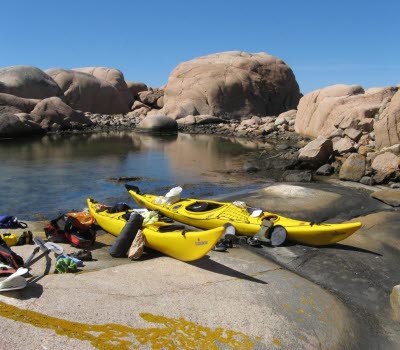Rock carvings in Backa
Brastad
Backa, just outside Brastad, is perhaps Sweden's most rock carving densest area. Backa was particularly during the Late Bronze Age, an important religious center. That we can guess that from the very large variety of carved rocks and motives. The carvings are direct traces of the people who lived and worked here 3,000 years ago. During summer, the annual Rock carving week takes place in Backa. You can participate in guided tours, workshops, activities for children and much more!
Possibly man have come here from all over Stångenäset to celebrate seasonal festivals. Most carvings are being added during the Bronze Age (ca. 1700-500 BC)..
The outcrops are covered with various motifs such as ships, sun wheels, cup marks, human figures, carriages, footprints and a variety of other shapes. There is many carvings here and still new carvings are found in the area. The great wealth of rock carvings on some 20 outcrops along the old Backa village road has given rise to the name Via Sacra - The sacred way.
The most famous of all the carvings along this road is the so-called Shoemaker, a six foot human figure often depicted in various contexts. How the name Shoemaker occurred is controversial - perhaps it is because he holds the ax in his hand resembled a shoemaker.
Many indications that Shoemaker represents a weather god, thus an early pioneer of the Iron Age asagud Tor. His symbol was just the hammer or ax. In the area around Backa there are also other human figures depicted with an ax in his hand.
The rock in which the shoemaker is was documented as early as 1627 by the Norwegian physician and lecturer Peder Alfsön, although he then depicted Shoemaker as a woman! Shoemaker is the earliest documented scientifically rock carving in Europe.
To rock carvings designs in Backa belongs also both solmotiv and tanks. Sun symbols in the form of so-called solstativ is also common in the area. The same applies to the two-wheeled horse-drawn chariots. The carriages were status symbols for the Bronze Age leading social classes.
Also in other parts of the municipality of Lysekil, you can find rock premises with designs unique to this region. In the area around Brastad there are carvings with often violent subject and on a flat rock here is the earliest known murder or manslaughter depicted in Scandinavia. A common motif here are people who swing or lift a sword above their heads. These designs have come to be known as sword lifter.
In the municipality of Lysekil is also a rare depiction of a Bronze Age sword in actual size. Another unique relic from the Bronze Age is a carved stone with a Bronze Age ship designs. All these carvings premises has been found in recent years inventories and in connection with documentation of prior known carvings.








